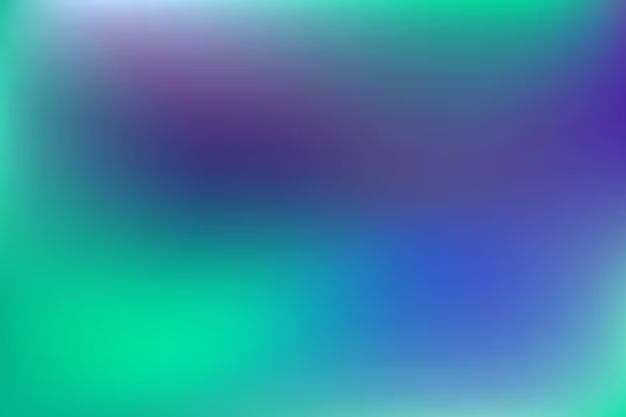Indigo is a rich, deep shade of blue that has long been a popular color for clothing, home decor, and more. When using indigo, it can look stunning on its own but can also pop when combined with other colors. Choosing the right color combinations is key to making indigo really stand out in any design. Here we’ll explore some of the best color pairings and schemes to consider when working with indigo.
Complementary Colors
A complementary color scheme is one of the most common and effective ways to make indigo look its best. Complementary colors are those located opposite each other on the color wheel, creating a striking, high-contrast look. For indigo, excellent complementary colors include:
– Orange – The warm, vibrant hue of orange makes an energetic pairing with the cooler, deeper indigo. Try using a burnt orange with a medium indigo for a bold, eye-catching combo.
– Yellow – Bright, sunny yellow can provide the perfect contrast for indigo, especially tone-on-tone shades like mustard yellow. This scheme is cheerful and youthful.
| Complementary Color | Effect with Indigo |
|---|---|
| Orange | Energetic, striking |
| Yellow | Cheerful, youthful |
Analogous Colors
Using analogous colors is a subtler but still impactful approach. Analogous colors sit next to each other on the color wheel, creating a sense of harmony. Great options to pair with indigo include:
– Blue-violet – Just next to indigo on the wheel, blue-violet has a similar moody feel but a bit more purple undertone. Faded, dusty shades work beautifully together.
– Blue – Different shades and tints of blue are easy matches for indigo but create enough contrast for an interesting look. Try a pastel sky blue with a dark indigo.
| Analogous Color | Effect with Indigo |
|---|---|
| Blue-violet | Harmonious, moody |
| Blue | Subtle contrast |
Split Complementary Colors
This scheme uses one color on either side of the complement of the base color, indigo’s complement being orange. Great options include:
– Red-orange and yellow-green – These provide vibrant accent colors to indigo while also bringing out indigo’s subtle hints of purple and green.
– Yellow-orange and blue-green – Warmer yellow-orange and cooler blue-green provide versatile split complements for indigo depending on the look you want.
| Split Complementary Colors | Effect with Indigo |
|---|---|
| Red-orange and yellow-green | Vibrant, accentuating |
| Yellow-orange and blue-green | Versatile, warm or cool |
Triadic Colors
A triadic scheme uses three colors evenly spaced around the color wheel. For indigo, excellent options include:
– Indigo, tomato, and lime green – The bright, vivid combination creates an eclectic, fun look.
– Indigo, crimson red, and seafoam green – This more analogous palette has the same exciting blend with tones a bit closer to indigo.
| Triadic Colors | Effect with Indigo |
|---|---|
| Tomato, lime green | Eclectic, vivid |
| Crimson red, seafoam green | Exciting blend, more analogous |
Tetradic/Rectangle Colors
Tetradic color schemes use four colors spaced evenly around the wheel. For indigo, great tetradic palettes include:
– Indigo, yellow-orange, red, and blue-green
– Indigo, vermilion, sea green, and violet
These combinations give indigo maximum contrast and visual interest while still remaining cohesive when all four colors are used together. The vibrant palette creates an energetic, lively scheme while the more subdued one has a cool, soothing effect.
| Tetradic Colors | Effect with Indigo |
|---|---|
| Yellow-orange, red, blue-green | Energetic, lively |
| Vermilion, sea green, violet | Cool, soothing |
Monochromatic Colors
Don’t overlook the power of a monochromatic palette where different tones, tints and shades of indigo are used together. This creates a sophisticated, elegant look. Try:
– Light powder blue, mid-range indigo, and deep navy
– Pale indigo, true indigo, and dark indigo for a dramatic look
| Monochromatic Colors | Effect with Indigo |
|---|---|
| Light powder blue, mid indigo, deep navy | Sophisticated, elegant |
| Pale indigo, true indigo, dark indigo | Dramatic, bold |
Accented Neutrals
Finally, don’t underestimate indigo as a bold accent shade against neutral backdrops like:
– Cream, light gray, and indigo – Chic and refined
– Beige, charcoal, and indigo – Stylishly modern
Pops of indigo against muted neutrals can add just the right amount of color without overpowering a scheme.
| Neutral Colors | Effect with Indigo |
|---|---|
| Cream, light gray | Chic, refined |
| Beige, charcoal | Stylishly modern |
Putting It All Together
When putting together indigo color schemes, don’t be afraid to mix and match shades from complementary, analogous, tetradic, and monochromatic groups for unique effects. A few examples:
– Indigo, seafoam green, yellow-orange, light blue
– Indigo, red-violet, lime green, navy
– Cream, pale indigo, dark indigo, crimson
The most successful indigo palettes will combine warm and cool tones, light and dark shades, and vivid accents for depth and visual interest. So be creative and have fun coming up with color combinations that feature this universally flattering hue.
Conclusion
Indigo is an endlessly versatile color that looks stunning in all sorts of color combinations. Complementary schemes with orange and yellow make indigo pop while analogous or triadic schemes with other shades of blue and violet create harmonious, soothing palettes. Tetradic and monochromatic combinations offer even more ways to highlight indigo’s beautifully unique shade. Whether using bold contrast or tonal shades, indigo never fails to look incredible. With so many creative options, anyone can come up with stylish indigo color schemes for any purpose.


